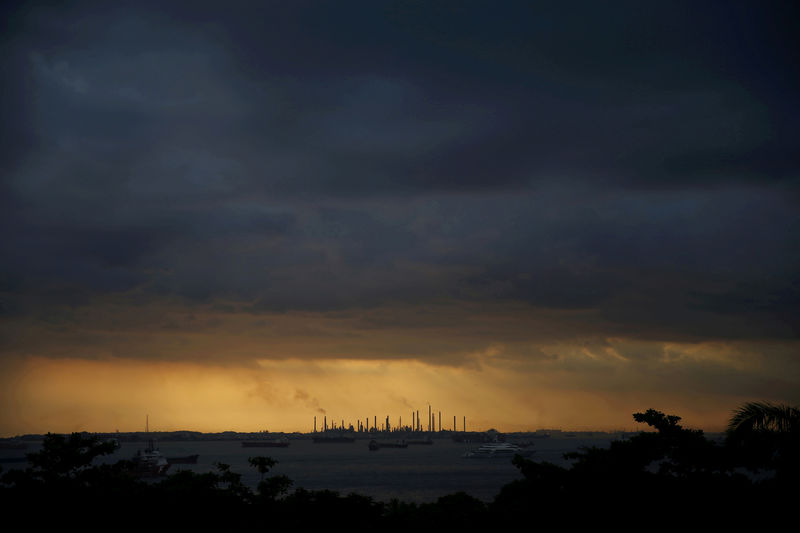By Henning Gloystein
SINGAPORE (Reuters) - Oil product margins have been tossed around on a wild rollercoaster ride in October, as factors like impending Iran sanctions, the Sino-American trade war and upcoming new shipping regulations yank fuel profits up, down and back again.
Some margins, known as cracks, including for Asian fuel oil and gasoil have boomed, while others, like Asian and European gasoline cracks, have plunged.
Asia's cracks for gasoil
"These cracks are extraordinary," said Sukrit Vijayakar, director of Indian energy consultancy Trifecta.
Vijayakar, a veteran of India's refining industry, said such high gasoil and fuel oil cracks should move a refiner to maximise these products.
"Keenly aware that these cracks are extraordinary, he (the refiner) should protect such production decisions by hedging the cracks...as an insurance to protect windfall gains," Vijayakar said.
The margin on fuel oil - a residue from crude processing - is typically negative.
In the last week of October, however, it stood at around $1 per barrel, pushed up in part by tightening supply ahead of sanctions against Iran, a major supplier of fueloil, which the United States will impose from next week.
Another strong performer has been distillate fuel, including gasoil.
One of the biggest drivers here has been new regulation by the International Maritime Organization (IMO). This will force shippers to adopt cleaner fuel standards from 2020, and it pushing up demand for low-sulphur gasoil made from heavy crude.
"In an IMO 2020 world, we expect distillate margins will increase," Goldman Sachs (NYSE:GS) said on Wednesday in a note to clients. "We expect refiners with...access to heavy crude barrels and high-distillate yields to benefit most from the regulations."
For graphic on Asian & European refinery margins, click https://tmsnrt.rs/2P3eG3V
LOSER: GASOLINE
Not all has been rosy in refining. This year has been particularly painful for refiners specialised in churning out gasoline.
Booming auto sales in emerging markets and especially China
That boom has turned into a bust as refiners now pump more than even this growing market can absorb, eroding profit margins.
European refiners sent their excess fuel to Asia, hoping to find a home there for their surplus petrol.
This came just as China's massive refinery sector started exporting excess gasoline as even its thirsty domestic market couldn't cope with the flood of fuel.
Analysts say things may get worse, especially if an economic slowdown on the back of widespread emerging market currency weakness and the Sino-American trade war sucks demand out from under a sector already swamped by glut.
"Gasoline fundamentals continue to deteriorate and are a source of concern for us," Goldman Sachs said on Wednesday.

For graphic on China crude processing vs fuel output & exports, click https://tmsnrt.rs/2phRfVg